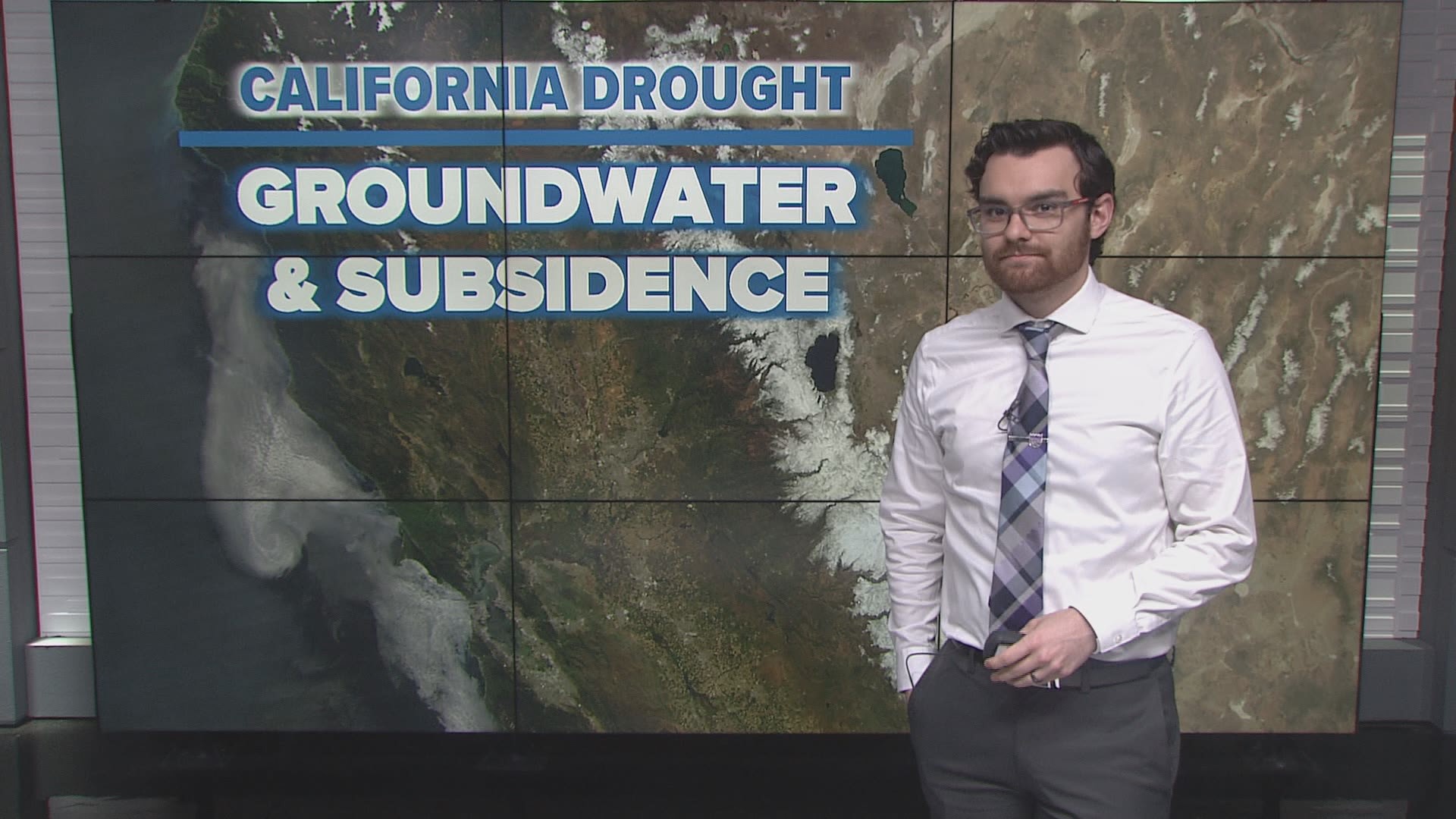SACRAMENTO, Calif. —
Even after a surplus of water fell on the state this past winter, California continues to face problems brought on by the years of drought that plagued the state.
Earlier this month, the California Department of Water Resources announced that there would be no restrictions in water allocation from the State Water Project for the first time since 2006 due to a tremendous increase in reservoir storage.
While reservoir storage can see tremendous gains in a single year, the same can’t be said for groundwater. Years of overpumping groundwater aquifers, particularly in the San Joaquin Valley, has caused the land to subside.
"We can think of an aquifer as sands and gravels and clays kind of filling up a volume of space and the voids are all filled with water," said Claudia Faunt, Supervisory Hydrologist for the United States Geological Survey.
Problems arise when this occurs, especially because land subsidence occurs at differing rates. California's water infrastructure, including the canals and aqueducts that direct water to where it's needed, is cracking in many places due to subsidence. So even though statewide water allocations are at 100%, water deliveries will be less than what they were originally intended to be.
"If you have subsidence, all of a sudden, there's a low point here. You now have water having to fill in this low point and it forms a choke point. So this canal that was designed to move water at this rate now cannot move as much water through the valley as it was designed to," said Faunt. "All sorts of infrastructure has been affected by these changes from the ground, sinking differentially in different areas."
WATCH ALSO:



















